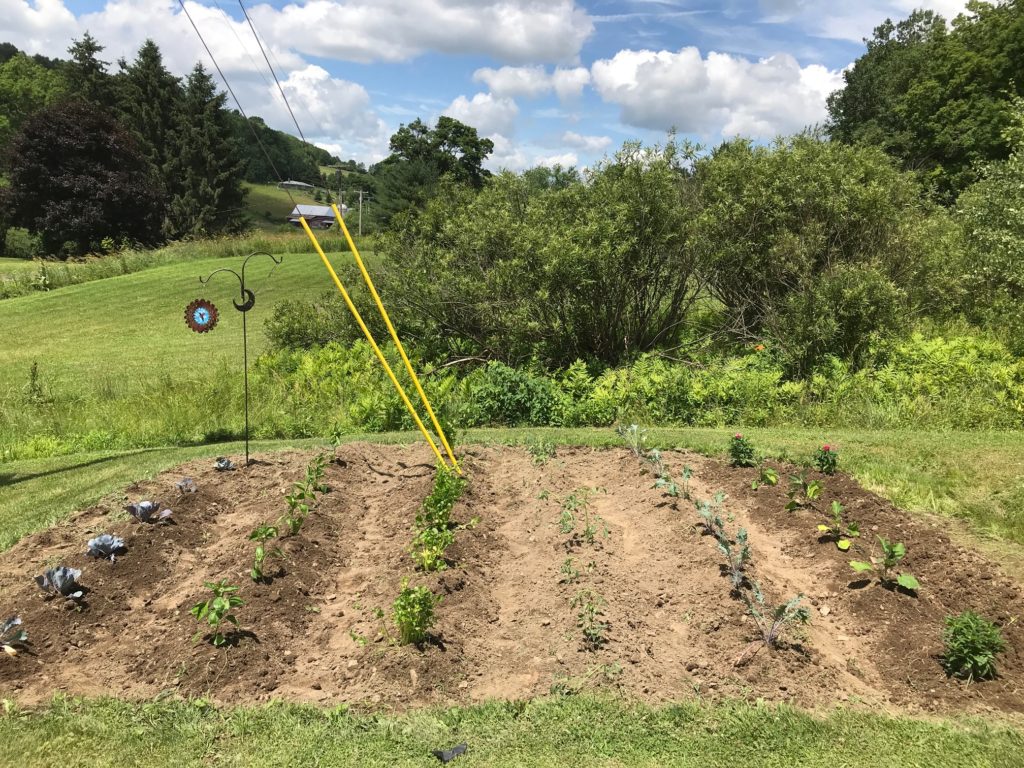What a tomato plant taught me
I know I have written about this before, but so many of my fondest memories as a child in the 70’s was having a garden. At that time, it was commonplace and we would plant way more than needed so we could can, freeze and store the remaining harvest to eat throughout the Winter and Spring. I can still see the shelves in the pantry lined with jars of bread and butter pickles, apple butter, corn relish, raspberry preserves(with seeds!) and of course canned tomatoes. That is how we lived and nourished our families.
One of my favoriate memories in the garden was with my dad having a tomato fight. I don’t remember how it started, but the next thing I knew we were throwing small cherry tomato’s at each other. That moment left a lasting impression on me, not only as father and son but also the role the “tomato” has played in our family.
You see, the tomato was always at the center of our home. First, since we are 50% Italian, most meals had sauce or as my grandmother Nanny called it “gravy”. Therefore, there were meatballs, sausage, some form of pasta and lots of garlic bread smothered in this delicious vegetable almost daily. In fact, back then, the “gravy” was real and homemade, not from a jar and mom and dad had their version which were both amazing. Sometimes early in the growing season, before they were ripe, slices of green tomatoes would find their way into the frying pan. They were lightly coated in flour along with Nanny’s special seasoning which made them crispy and the bitterness bearable. But for me, once they were ripe, the best way was straight out of the garden like an apple while standing amidst the planted rows. <sigh>
It wasn’t just enjoying the harvest that made them special either. It was the time and care we had taken to plant, support and maintain them as they grew. It all started with digging a hole and burying them deeper then you would expect to give them a good head start. Next, you would carefully remove the “suckers”, which were small unwanted stems that grew out of the “elbows” of the plant. These were thought to suck the energy out of the plant. To this day, I don’t even know if this is true, but it’s what we came to believe. As a final step, to support their growth, we would take a straight wooden stake, about 4 feet tall and pound it near the base of the plant. Then we would make handmade cloth strips from old towels and gently tie the plant to the stake to give support during its growth. In the beginning, the stake towered over the tomato plant almost like a parent to a child. This stake and cloth strips would now serve serve as a “guidepost”, ensuring it would grow straight and giving it the support it needed to carry the burdens it encountered and fruit it developed along the way.
Yet no matter how well we tied the tomato plants to the stake, eventually they would find a way to break free and grow into the shape and direction it was destined for…ultimately producing beautiful tomatoes. The stake had served its purpose. It had given the plant a good start and support along the way, but the tomato plants true fate was always in its own hands.
This analogy came to mind the other day as I thinking about raising our kids: Kids are like tomato plants. When they are young, we teach the proper values and hope it deeply takes root. We stand along side them from the very beginning, giving them love and support as a human “guidepost”. This helps them “grow up” in the right direction, just like the wooden stake and the young tomato plants. We support and protect them, sometimes too tightly and sometimes when we don’t need to…letting go can even be hard as they grow into their own person. Yet at some point, they must outgrow the security and limitation of the “stake” and our “control”. They must burst through the metaphorical cloth tie and become what they are meant to be, bringing their own self and “fruit” into the world.
Thanks Mom and Dad for not only instilling in me a love of tomatoes but for showing me the importance of the “stake” you provided to help me get started, stay on track and eventually burst free to grow my own “tomatoes”.
